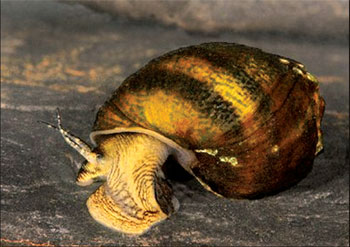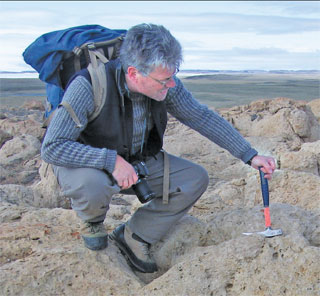|
-new-n.jpg)
Road safety campaigns, a must in schools
by Ananda KANNANGARA
Education Minister Bandula Gunawardane has stressed the importance of
conducting regular road safety campaigns in schools with the assistance
of area police stations to create an awareness among children on ways to
avoid becoming victims of road accidents. He said the danger of using
mobile phones while crossing busy highways, walking on roads and
travelling in fully packed private school vans and trishaws should be
highlighted at these campaigns as children do not seem to realise the
gravity of such actions.
He said schoolchildren should also be educated on the danger of
meeting with accidents when travelling on the footboard of trains and
buses, especially during peak hours when the buses and trains are
crowded .
Minister Gunawardane told the Junior Observer that he had seen many
schoolchildren travelling on the footboard of public transport in a
dangerous manner. He called upon parents and teachers to strictly warn
children to refrain from travelling in this manner.
He said drivers of trishaws and school vans should also be warned and
reprimanded for transporting schoolchildren in this manner. He asked
vehicle drivers not to focus attention only on earning an income by
disregarding the value of human lives.
Statistics released by the Sri Lanka Traffic Police (SLTF) reveal
that around 700 pedestrian deaths which includes many schoolchildren,
take place every year, with two deaths reported daily.
A senior SLTF official said they have already launched an island wide
programme to educate schoolchildren on the importance of strictly
observing road rules as a precaution to avoiding fatal accidents.
He said it is imperative to educate people on the gravity of
speeding, drunk driving, overtaking, sudden turning, transporting
passengers in un-roadworthy vehicles and continuous driving without a
rest as they are some of the main reasons for highway accidents. He
requested motorists to refrain from breaking the highway code as it is
the only way to minimise accidents where many valuable lives are lost.
Snail, thought extinct, rediscovered
In 2000, the oblong rocksnail — about the size of a nickel with a
yellow body and a banded shell — was declared extinct in its home,
Alabama’s Cahaba River Basin.
However, a graduate student has rediscovered these snails on a short
stretch within the Cahaba River, where it crosses the Bibb and Shelby
county lines.“To be able to find a species that was thought to be
extinct is always encouraging,” said the graduate student, Nathan Whelan
of the University of Alabama, Tuscaloosa, in a statement, “especially
considering biodiversity and conservation stories are not typically
positive these days.”
|

The rock snail. |
It's not clear why the snail, scientifically known as Leptoxis
compacta declined, but it is likely a combination of the species’ small
natural range, and pollution from local mines and the Birmingham
metropolitan area, Whelan and colleagues write in a study published on
August . 8 in the journal PLoS ONE.
Whelan found the oblong rocksnail at only one section within its
original, 50-mile (80-kilometre) range along the river.
However, at other sites along its historic range, similar snails
turned up.
This gives rise to another mystery: Why did the oblong rocksnail
suffer such a dramatic loss of range when other snails in the same
environment did not, he and colleagues write.
The oblong rocksnail's range is so restricted now that the remaining
snails could easily be wiped out. So, Whelan and colleagues argue that
it should be considered for protection under the U.S. Endangered Species
Act.
Researchers also hope to establish a second population of the snails
elsewhere within their previous range.
- Livescience
Massive meteorite crater found in Canadian Arctic
Researchers in Canada's western Arctic have found evidence of a
crater that formed when a huge meteorite slammed into Earth millions of
years ago. Measuring about 15 miles (25 kilometres) across, the
formation was named the Prince Albert impact crater after the peninsula
where it was discovered. Researchers don't know exactly when it was
created, but evidence suggests the crater is between 130 million and 350
million years old, according to a statement from the University of
Saskatchewan.
|

Researcher Brian Pratt Checking the crater |
Meteors are fragments of asteroids or comets that enter Earth's
atmosphere at high speeds; most are small, some as tiny as a grain of
sand, so they disintegrate in the air, and only rarely are they large
enough to make it to Earth's surface. When meteors slam into Earth, they
are called meteorites.
A team of geologists spotted this newly identified meteorite crater
while surveying the region for possible energy and mineral resources.
They were initially intrigued by steeply tilted strata visible in river
gorges and other features in the flat tundra of northwestern Victoria
Island.
“Unless you recognised the telltale clues, you wouldn't know what you
were looking at,” researcher Brian Pratt explained in the statement.
“You might see a bunch of broken rocks and wonder how they got there,
but we found abundant shatter cones.”
Shatter cones are surface features with distinctive wavy patterns
that are known to be created only by the tremendous force of a meteorite
impact or an underground nuclear explosion. What's more, Pratt said his
map showed that the feature is circular, which is characteristic of
impact craters.
“Impact craters like this give us clues into how the Earth's crust is
recycled and the speed of erosion, and may be implicated in episodes of
widespread extinction of animals in the geological past,” Pratt said.
“It's an exciting discovery.”
There are about 180 known impact craters on Earth. Geologists think
they would find countless more if plate shifting, volcanic activity and
erosion didn't hide the evidence of most ancient impacts. Earlier this
summer, researchers in Greenland documented possibly the oldest and
largest meteorite crater ever found on Earth.. The crater, estimated to
be 3 billion years old, currently measures about 62 miles (100 km)
across.
But the researchers believe its width before erosion was likely more
than 310 miles (500 km) — much bigger than the largest visible crater,
the 2-billion-year-old Vredefort crater in South Africa, which measures
186 miles (300 km) across.
-LiveScience |


